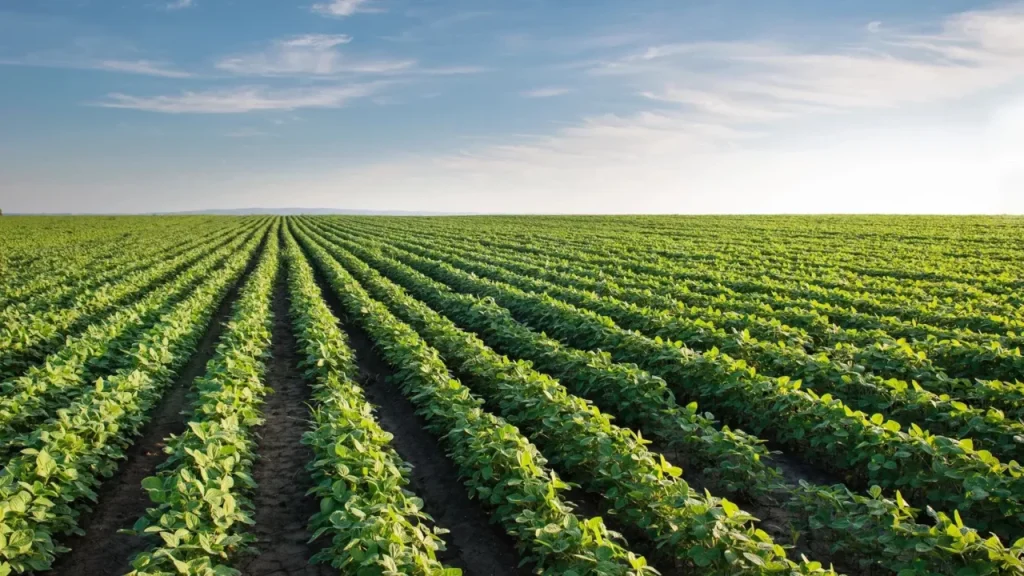Regenerative Agriculture Business Opportunities: It’s Not Just Farming, It’s a Frontier

Let’s be honest. When you hear “regenerative agriculture,” you probably picture a farmer on a tractor, right? Well, think bigger. So much bigger. This isn’t just a niche farming method; it’s a fundamental shift in our relationship with land and food. And with any shift this massive, a whole new world of business opportunities blooms.
Regenerative ag is about working with nature, not against it. It’s a system of principles that rebuilds soil organic matter, enhances biodiversity, and improves the water cycle. The outcome? More resilient land, more nutrient-dense food, and… a serious chance to build a thriving, future-proof business.
The Core Opportunity: From Soil to Sale
At its heart, regenerative agriculture creates value that conventional systems simply can’t. It’s the difference between extracting and cultivating. This value translates directly into business models that consumers are actively searching for.
1. The Brand Power of Provenance
People don’t just buy food anymore; they buy stories. They buy values. A regenerative brand tells a powerful story of healing, of responsibility, of flavor that’s rooted in healthy soil. This isn’t a marketing gimmick—it’s a verifiable claim that builds insane customer loyalty.
Imagine selling pasture-raised chicken where the packaging details how the grazing practices sequestered carbon and increased earthworm counts. That’s a connection a “free-range” label can’t touch. You’re selling a solution on a plate.
2. The Carbon Economy is Real
Here’s a game-changer: farmers are becoming land-based climate heroes. Carbon farming, or participating in carbon credit markets, allows landowners to get paid for the carbon they draw down from the atmosphere and store in their soil.
It’s a new revenue stream. Companies like Microsoft or Shopify are desperate for high-quality carbon credits to meet their net-zero goals, and they’re willing to pay. The business opportunity here isn’t just for the farmer, but for the entire ecosystem of verification and aggregation. Tech platforms that measure soil carbon, consultants who guide farmers through the process, brokers who connect land to market—this is a brand new industry in itself.
Beyond the Farm Gate: The Ripple Effect
The opportunities don’t stop at the field’s edge. In fact, they ripple out, creating demand for new services and products that support this transition. Honestly, this is where the real blue-sky potential lies.
Inputs & Technology
Conventional ag relies on synthetic fertilizers and pesticides. Regenerative systems need different tools. There’s a booming market for:
- Bio-fertilizers and inoculants: Living products that fix nitrogen or enhance soil biology.
- Cover crop seed blends: Specialized mixes tailored for specific climates and soil goals.
- Low-impact tech: No-till drills, roller-crimpers, and virtual fencing for managed grazing.
- Soil testing services that go beyond NPK to analyze soil life and organic matter.
Education & Consulting
Transitioning to regenerative practices is a journey. It’s complex. Farmers need guides. This has created a massive demand for regenerative agriculture consultants.
These aren’t your typical agronomists. They’re part ecologist, part economist, part coach. They help design grazing plans, select cover crops, and navigate the financial aspects of the transition. If you have the knowledge, there are farmers who need you.
Supply Chain & Logistics
How do you get a regeneratively grown product from a small, diverse farm to a discerning customer? The old, centralized commodity system isn’t built for this. New models are emerging.
Think regional aggregation hubs that collect products from multiple regenerative farms to supply restaurants and grocery chains. Or subscription boxes (CSAs on steroids) that curate and deliver regenerative goods directly to doorsteps. The business is in building the bridge.
Niche Markets with Major Appeal
You don’t need to be a 10,000-acre farm to succeed. Some of the most profitable opportunities are in specialized, high-value niches.
| Niche | Business Idea | Why It Works |
| Regenerative Apiculture | Honey production from pollinator-friendly farms; “Bee-to-table” pollination services. | Directly links soil health to pollinator health, a huge consumer concern. |
| Pasture-Raised Livestock | Regeneratively grazed beef, lamb, or pork with verified carbon footprint data. | Meat with a message; addresses environmental and ethical concerns. |
| Botanical Ingredients | Growing medicinal herbs, calendula, or other botanicals in polycultures. | Supplies the natural skincare and supplement industries with pure, potent ingredients. |
| Agritourism & Education | Farm stays, workshops, and “soil-to-supper” dining experiences. | People want to see and feel the regenerative difference. They’ll pay for the experience. |
The Challenges (And How to See Them as Opportunities)
Sure, it’s not all sunshine and rainbows. The transition can be costly and knowledge-intensive. Yields might dip temporarily. And the market infrastructure is still, well, under construction.
But here’s the deal: every one of these challenges is a business opportunity in disguise.
- Financing the transition? That’s a need for specialized green loans and investment funds focused on regenerative assets.
- Lack of data? This creates a market for farm management software that tracks ecological outcomes alongside financial ones.
- Consumer confusion? An opportunity for certification bodies and labels that people actually trust.
So, Where Does That Leave Us?
Look, regenerative agriculture is more than a trend. It’s a necessary and inevitable evolution. The business opportunities aren’t just in growing food—they’re in rebuilding the entire system around it. From tech and finance to education and logistics, the entire value chain is being reimagined.
The most successful businesses of the next decade won’t just be those that are less bad. They’ll be the ones that are actively, verifiably good. They’ll be the ones that understand that the real ROI isn’t just in the bank account, but in the soil, the water, and the community. The frontier is open. The question is, what part of it will you build?





